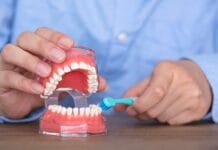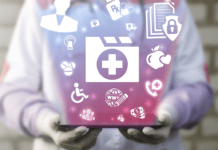The status of oral health for populations with low income is significantly poorer than for persons with higher incomes.1 Multi-factorial reasons exist for this disparity from both patient and dental professional standpoints. Patients with low income tend to have a low understanding of oral health and place a lower value on the service unless there is an acute problem.2
Patients with lower income also encounter many barriers to access, including no or poor dental insurance coverage, transportation issues, perceived negative bias of dental staff, and lack of trust. From the dental professional’s perspective, patients with low income present issues with poor reimbursement, frequently missed appointments, and a perceived lack of value for oral care provided.2 This leads to frustration between both parties and serves to potentiate the problem.
Dental professionals are not the only ones who struggle with the care of patients with low incomes. Medical outcomes for patients with low income are also poorer, with worse outcomes in five of the top ten causes of death and disability.3
Access to medical care tends to be higher, with the percentage of persons without medical insurance at 9.3% compared to the 27% who lack dental insurance.4 But insurance does not equate to access. Preventive care is critical to improving health outcomes, but utilization by the working poor is lower than those with higher income, even with adjustments for lack of insurance.5
This article explores the lessons learned as a local free medical clinic coordinator in Waterloo, Iowa, for the past 15 years. Working with underserved persons has created a heightened awareness of how misunderstandings occur and how providers often have unrealistic expectations for their patients who lack resources, including the perceived lack of value for preventive care. Understanding key concepts related to this vulnerable population is necessary before positive change is possible. With the knowledge gleaned from experience at the free clinic, dental hygienists play a key role chairside and in the community to improve oral awareness and outcomes.
Establishing the Free Clinic
Surprising discoveries related to the care of patients with low income began shortly after establishing the free clinic. Prior to the Affordable Care Act, when uninsured rates were over 12%, the free medical clinic was established as a service-learning clinical site for nurse practitioner students.6 The clinic’s focus was on preventive care, and its goal was to provide access to preventive services for persons with low income in an effort to improve community outcomes.
The local rate of poverty is over 18%, well above the national average.7 The clinic is provided designated space at the Salvation Army, which 250 to 300 residents visit daily. A “soft opening” was planned for the clinic, anticipating an overwhelming response from patrons for the newly free services of complete physicals, cholesterol and blood sugar screenings, and referrals for free cancer screening services. However, the predictions were wrong, and the clinic struggled to attract patients to accept the free preventive services.
As coordinator of the clinic, the initial reaction was, “What do these people not understand about free health care?” However, after further study of the population and its culture, it was discovered that the more appropriate question was, “What do we not understand about our patients with low income?”
Culture of Poverty
Prevention has long been the hallmark of dental care. For those with dental insurance, the standard of care is an oral evaluation and professional hygiene treatment at least twice yearly. These services, along with proper daily dental hygiene, aim to prevent the need for restorative services such as restorations, extractions, or other procedures.
This approach makes sense from an outcome and financial perspective, reducing the need for procedures and saving up to 43% of costs.8 However, for persons living in chronic financial need, the idea of seeing a provider without an acute issue is counterintuitive and opposes hidden rules learned when one is raised in a culture of poverty.9
All cultures have hidden rules that provide cohesiveness and behavioral guidance to that people group.10 Just as individuals from different countries or religions may have different viewpoints or interpretations of behaviors or events, so do patients from different economic classes.
Businesses such as health care organizations generally function on rules understood by the middle class. One of the basic rules is time orientation; the middle class values future thinking, such as schedules and preventive care. Being on time is expected, and preventive care is valued.
Persons with low income tend to live with a present orientation. Psychologists believe this present orientation directly results from chronic resource scarcity and the instability it causes.11 Individuals with low income are often faced with multiple urgent needs because of their lack of resources and reserves. This means they often struggle with issues like putting food on the table tonight and paying the rent by the end of the week. These basic needs take priority over preventing a potential tooth loss in the future.
The future is often unpredictable for those living in financial need, making it difficult to plan in advance. A patient may plan to put money aside to pay for a restoration, but the car breaks down, and the funds must be redirected. When competing urgent needs repeatedly thwart such plans, the motivation for future planning is lost.
Understanding the cultural viewpoint of those living in poverty reveals the challenge for providers caring for this vulnerable population. The free clinic responded to this new understanding of its patients by adjusting the services offered and encouraging persons with acute issues to come to the clinic for preventive care. Once these acute needs are addressed, the focus of the visit becomes prevention.
For example, patients coming to the clinic with cold symptoms are offered treatment, plus a full physical, cholesterol screening, vaccine updates, and referrals for further preventive services if needed. Patients are generally very receptive to the services once educated about their risks.
Dental providers have been reluctant to accept patients with acute needs, preferring to have them establish care for preventive services first and then address acute issues. However, experience at the free clinic reveals this approach is not effective. Using the acute need as a teachable moment and an opportunity to establish rapport is more culturally sensitive.
The response of patients to patient education highlights another rule of poverty: relationships are highly valued.10 The time student providers spend educating feels very relational to patients. A positive patient-provider relationship can go a long way toward encouraging positive behavior change and compliance in patients with low income. In the medical field, studies have shown that positive provider-patient relationships and cultural sensitivity can improve outcomes.12
Unfortunately, studies have also revealed that patients with low income generally receive less information and shared decision-making from their medical providers.13 Likewise, in the dental field, a descriptive study of patients with low income identifies what they want most from the dentist: to feel respected and cared for, information they can understand, a trusting relationship, and quality service.14 However, studies show that patients with low income perceive longer wait times and a lack of respect and compassion. They also cite judgmental and impersonal treatment from the front desk staff to the dentist.15-17
Another aspect of middle-class culture is the idea that one has control over the future through employing good choices and behaviors. Good outcomes are more likely if “good choices” are routinely made, while “bad choices” result in poorer outcomes. However, for those with chronic resource deprivation, there is the belief that fate or luck is more likely to influence outcomes.10 This may stem from the fact that there are also fewer choices for those with few resources. They often feel they have little control and, therefore, lack the self-efficacy to affect changes. Little energy may be invested in maintaining teeth when tooth loss is an expectation rather than an exception for many living in poverty.9
Setting short-term attainable goals and positive feedback is important in establishing the self-confidence needed to persist in making changes.
Health Belief Model and Poverty
Coordination of the Iowan free clinic has offered a platform for collaborating and educating health care colleagues on this population’s unique needs and perspectives based much on the health belief model. The health belief model provides a framework for motivating positive behavioral change. According to the health belief model, patients are more likely to make healthy changes if they understand they are at risk, if the benefits of treatment outweigh the barriers or risks, if they believe the issue is serious enough to take action, and if there is a cue or encouragement to take action.18
|
Motivators to Change |
Barriers to Change | Reducing Barriers |
|
Susceptibility |
Don’t understand risk factors | Educate about risks |
|
Benefits |
-Reduced pain for acute issues -Reduction of future problems may not be motivating |
-Put in cultural perspective -Relationship/employment |
|
Barriers/risks |
-Cost -Hassle -Negative encounter |
-Reduce or eliminate cost -Address social determinates of health -Empathetic, culturally sensitive care |
|
Serious threat |
Dental impact on general health poorly understood | Consistent messages from health care and dental sources |
|
Cues to action |
-Lack self-efficacy -Lack of support from the community |
-Current acute issue -Motivational interviewing -Positive relationship |
Table 1 Health belief model
Adapted from Rawlette, K.E.18
Benefits of Preventive Dental Care
The benefits of addressing acute oral issues causing the patient pain are understood, but the benefits of preventive care are not so obvious. There are some immediate cosmetic benefits to dental care, such as whiter teeth and fresher breath. But most benefits, such as fewer caries and lower costs, occur over time. This requires future thinking, which does not come naturally for those forced by circumstances to live in the moment.
Unfortunately, most of the general population poorly understands the benefits of oral wellness and the risks of poor oral health.19 Even among the best informed, only about one-third of patients understand the impact of oral health on cardiovascular disease, respiratory disease, diabetes, and dementia. That percentage drops below 20% for older generations. Patients with low income tend to have lower health literacy, resulting in even less understanding of risks.20
This reveals the importance of educating patients about the risks of poor oral health at any opportunity. Addressing preventive care after treating an acute dental issue is a teachable moment as the patient is likely to be more receptive. This method has worked well at the free clinic. Patient responses to an anonymous survey indicate that 85% of patients understand their health much better after their visit to the clinic, and 30% plan to make healthy changes.
One way the free clinic was able to enhance the benefits of preventive dental care was to secure a grant from a national dental source. The grant allows the clinic to provide $10 gas cards for patients who accept a referral to a local community college dental clinic for preventive care. Patients receive the card when they complete their appointment, along with a $10 voucher for produce at a local grocery store. This collaboration provides an immediate incentive for behavior that usually requires future thinking and also helps reduce the barrier of transportation costs.
Barriers to Receiving Dental Care
For patients with low incomes, the barriers to dental care are significant and overwhelming. “About 33% of dentists treat at least one Medicaid patient, which is lower than the national estimate of 43% based on data from IKN [Insured Kids Now]. This should not be surprising as the data from IKN are based on whether a dentist enrolls in Medicaid or CHIP, not whether a dentist actually treats Medicaid patients or submits claims to Medicaid.”21 So often, even those who are insured struggle to find a provider that will accept them for care.
Patients often must drive a distance for dental services, especially in rural areas. Pairing this with unreliable transportation, work schedules that may not allow time off, and childcare issues creates barriers that may dissuade even those in acute pain. One free clinic patient, unable to find a provider who would take his insurance, pulled his own tooth! Long-term benefits of preventive care are likely not enough to prompt low-income persons to take on these challenges.
There are additional barriers for patients with low income beyond the logistics of scheduling the appointment. Costs and copays are felt more acutely by persons with low income. Dentists frequently cite failed appointments as a reason they avoid taking patients with low income on Medicaid, and patients themselves perceive those negative attitudes. From front desk staff to the dentists themselves, patients feel that they are treated as second class, made to wait while dentists hurry through their care, and they are not given the information they need in a way they can understand.22,23
For cultures that put high value on relationships, these actions are viewed as disrespectful and hurtful. A study of reasons for missed appointments in primary care reveals that lack of a positive provider relationship and fear of judgment were major issues leading to appointment failure, along with other competing demands and logistics.24 So frustration and lack of understanding by dental staff may likely be contributing to the problem.
Establishing positive rapport with patients with low income can be a challenge for those raised in the middle and upper class. While dental hygienists and assistants are less likely to come from high-income levels than their dentist colleagues, they are still unlikely to have grown up in poverty. Greater numbers of students with low incomes enroll in community colleges, but only 40% of students who enroll complete a degree. Students with low income are even less likely to complete a program, with only 21% of those in the lowest income quartile achieving a degree.25
This means there is often a disconnect and lack of knowledge of the lived experiences of those living in chronic financial need. It is often this misunderstanding rather than intentional offenses that cause relational rifts between health care professionals and their patients with low income.24
Educating Patients and Medical Providers on the Risks of Poor Oral Health
According to the health belief model, oral health must be a serious enough issue for people to take action. Unfortunately, the message communicated by our current health care system says that oral health is not essential and, therefore, not a priority. Dental coverage was not included in the Affordable Care Act, and traditional Medicare also does not include dental care.26 While dental care for children is a requirement for Medicaid, coverage for adults is optional.
There has been a movement to engage primary care providers in evaluating oral health and providing education. However, studies show that approximately 80% of providers received limited or no training on oral health, and only 33% provided education to patients on the connection between oral health and systemic illnesses.27
Since the majority of patients at the free clinic lack access to dental care, curriculum changes were made for the nurse practitioner students serving in the clinic. To ensure students have skills to properly assess and educate patients on oral issues, students receive training from a public health dental hygienist from the local public health office as an academic collaboration. They also complete oral and dental assessment modules and learn to apply fluoride varnish. Students are expected to do an oral assessment on each patient and offer varnish to patients, including adults, because of their high risk.
Interprofessional collaboration among dental and medical providers and educational institutions can help ensure consistent messages about the impact of oral disease on health and appropriate assessment and referrals.
Cue to Action
Change takes effort, especially for individuals who have learned a fatalistic viewpoint due to the constant struggle to meet survival needs. An acute dental issue may serve as an effective cue to action if it is paired with encouragement and a mutual, realistic plan. Motivational interviewing techniques help patients identify their own motivation to change and have been shown to increase compliance.9
This method helps patients set realistic goals. Frequent encouragement and celebrations of success in small changes help patients realize that their efforts can make a difference in their outcomes. This motivation from a provider with whom they feel a connection is very effective.
Simple gestures such as greeting patients and asking about personal background before delving into the business at hand go a long way to establishing rapport.14 Providing patients with explanations and education free of jargon is another. The value of relationships can also be used to motivate change and adherence to recommendations.
Patients may be motivated by knowing a healthy mouth can protect their family because they are less likely to pass bacteria that cause decay to their children or grandchildren.2 Poor oral health can not only cause lost days at work, but it can also make it more difficult to get a job.28 Patients living in poverty are more likely motivated by knowing a healthy smile may help them land a job than a promise to reduce future dental decay.
It is also important to offer choices with treatment and ask the patients if they will be able to work the plan with the resources they have. A practice that can both address barriers and promote positive patient perception by screening and offering assistance based on social determinants of health (SDoH). SDoH are personal and environmental attributes outside the health care field that significantly impact health outcomes.29 Studies are beginning to define social determinants of dental health.30
The free clinic routinely asks patients to complete an SDoH survey as part of their visit. The most common issues patients at the free clinic report are costs for care (including copays and medication costs), food insecurity, housing and utility costs, and transportation issues. These are consistent with the essential SDoH identified in the Health Leads Toolkit.31
The clinic has developed brief handouts specific to each of these determinants with the names of agencies that can assist with these needs, contact information, and program qualifications. These are given to patients who identify issues so that they have the tools and information to obtain assistance.
For instance, the clinic offers an information sheet with local dental offices that accept Medicaid or payment programs, dental colleges that provide care at a reduced cost, financial counselors that can assist with insurance applications, and area organizations that may assist with medical costs. Collaborative relationships with local free clinics, social services, and county health departments can help offices identify local resources for low-income patients.
Impact of Education and Collaboration
Education is key to improving oral health care ‒ education for patients and the public starts with education for providers and staff. Collaboration among dental, medical, and social professionals during training and in the field can lead to more patient-centered care and better outcomes.14
Taking time to educate patients works, and every opportunity must be taken to improve health literacy. Patients with higher oral health awareness are more likely to comply with care.32
Oral health education in elementary schools is shown to be effective in reducing caries and improving dental hygiene in students.33 Unfortunately, the message may be lost due to access issues in adulthood.
Creative opportunities for educating adults must be developed. Since significantly more patients have access to medical insurance than dental coverage, it would follow that much of that education could be offered in primary care settings. The United States Preventive Services Task Force recommends screening and education for children but cites insufficient evidence to support the standard related to asymptomatic adults.34 Concern over medical providers’ accuracy of a screening assessment was cited as an issue.
More academic collaborative partnerships are needed to address this gap. Collaborative care in the practice setting is also changing how healthcare is offered. Embedding dental hygienists in primary care has been studied and appears to be a viable and effective option.35
For health professionals, more must be done to incorporate cultural understanding of patients with low income as part of their education. A study by Behar-Horenstein and Feng showed that many dental students held negative stereotypes of patients with Medicaid, but faculty and dental residents were even more likely to have these attitudes.36
Nurse practitioner students who serve at the free clinic consistently reflect on how learning about cultural views and experiences at the free clinic has increased their understanding and empathy with this population. Based on their feedback, similar training on the cultural views of patients with low income was provided at two primary care clinics.37 Two 1-hour training sessions were offered to all staff, including providers, nurses, and front desk staff. Results of anonymous surveys showed a significant improvement in attitudes and understanding (p<.001).
Study participants agreed that similar training should be mandatory for health care providers. Methods such as volunteering in free clinics and poverty simulations as part of required coursework have been shown to be effective in improving attitudes toward people experiencing poverty.38-40
In Closing
The system for providing oral health is broken, and it will take time and concerted efforts by dental and medical health professionals alike to bring about lasting change. Legislative changes in insurance availability, reimbursement, and scope of practice are extremely important in improving outcomes but take time.
The good news is that education and collaboration can have an immediate impact at the patient and provider levels. Dental hygienists, as primary patient educators, can significantly impact the patient-provider relationship. Their educational efforts can increase patients’ oral health literacy and compliance, improve the patient experience, and reduce missed appointments. Since dental hygienists work closely with both patients and dentists, they are in a position to act as liaisons to providers advocating for their patients with low income. Connections and involvement of hygienists in the community, health care colleges, and medical clinics can increase this impact and collaborative practice.
However, hygienists must ensure their cultural awareness by including content on care for patients with low income as part of their professional education. With this, hygienists are keenly poised to improve oral health outcomes for this vulnerable population.
Before you leave, check out the Today’s RDH self-study CE courses. All courses are peer-reviewed and non-sponsored to focus solely on high-quality education. Click here now.
Listen to the Today’s RDH Dental Hygiene Podcast Below:
References
- Health Disparities in Oral Health. (2024, May 15). Centers for Disease Control and Prevention. https://www.cdc.gov/oral-health/health-equity/
- Patrick, D.L., Lee, R.S.Y., Nucci, M., et al. Reducing Oral Health Disparities: A Focus on Social and Cultural Determinants. BMC Oral Health. 2006; 6(Suppl 1): S4. https://bmcoralhealth.biomedcentral.com/articles/10.1186/1472-6831-6-S1-S4
- Chetty, R., Stepner, M., Abraham, S., et al. Association Between Income and Life Expectancy in the United States, 2001-2014. JAMA. 2016; 315(16): 1750-1766. https://jamanetwork.com/journals/jama/article-abstract/2513561
- New Report: 68.5 Million Adults in the US Don’t Have Dental Insurance, May Rise to 91.4 Million by End of Year. (2023, September 6). CareQuest. https://www.carequest.org/about/press-release/new-report-685-million-adults-us-dont-have-dental-insurance-may-rise-914
- Ross, J.S., Bernheim, S.M., Bradley, E.H. et al. Use of Preventive Care by the Working Poor in the United States. Prev Med. 2007; 44(3): 254-259. https://www.ncbi.nlm.nih.gov/pmc/articles/PMC1810564/
- Percent Without Health Insurance, Black Hawk County, Iowa. (2014). Open Data Network. https://www.opendatanetwork.com/entity/0500000US19013/Black_Hawk_County_IA/health.health_insurance.pctui
- QuickFacts: Waterloo City, Iowa. (2021, July 1). United States Census Bureau. https://www.census.gov/quickfacts/waterloocityiowa
- Okunev, I., Tranby, E.P., Jacob, M., et al. The Impact of Underutilization of Preventive Dental Care by Adult Medicaid Participants. J Public Health Dent. 2022; 82(1): 88-98. https://www.ncbi.nlm.nih.gov/pmc/articles/PMC9303757/
- Shirtcliff, C., Dreussi-Smith, T. Outreach, Prevention and the “Urgent Chair.” Northwest Dent. 2015; 94(4): 12-13, 15-18.
- Payne, R.K. (2018). A Framework for Understanding Poverty – A Cognitive Approach (6th ed.). aha! Process.
- Sheehy-Skeffington, J. The Effects of Low Socioeconomic Status on Decision-making Processes. Cur Opin Psych. 2020; 33: 183-188. https://pubmed.ncbi.nlm.nih.gov/31494518/
- Del Canale, S., Lois, D.Z., Maio, V., et al. The Relationship Between Physician Empathy and Disease Complications: An Empirical Study of Primary Care Physicians and Their Diabetic Patients in Parma, Italy. Aced Med. 2012; 87(9): 1243-1249. https://journals.lww.com/academicmedicine/fulltext/2012/09000/the_relationship_between_physician_empathy_and.26.aspx
- Verlinde, E., De Laender, N., De Maesschalck, S., et al. The Social Gradient in Doctor-Patient Communication. International Journal for Equity in Health. 2012: 11: 12. https://equityhealthj.biomedcentral.com/articles/10.1186/1475-9276-11-12
- Noushi, N. Bedos, C. Developing Person-Centered Dental Care: The Perspectives of People Living in Poverty. Dent J. 2020; 8(3): 82. https://www.ncbi.nlm.nih.gov/pmc/articles/PMC7557589/
- Mofidi, M., Rozier, R.G., King, R.S. Problems with Access to Dental Care for Medicaid-Insured Children: What Caregivers Think. Am J Pub Health. 2002; 92(1): 53-58. https://www.ncbi.nlm.nih.gov/pmc/articles/PMC1447388/
- Wallace B.B., MacEntee M.I. Access to Dental Care for Low-income Adults: Perception of Affordability, Availability, and Acceptability. J Community Health. 2012; 37(1): 32-39. https://pubmed.ncbi.nlm.nih.gov/21590434/
- Askelson, N.M., Chi, D. L., Hanson, J.D., et al. Preventive Dental Care Utilization for School-aged Children in Medicaid: Parents’ Perceptions and Experiences with Medicaid Dentists. J Theory Pract Dent Public Health. 2013; 1(3): 26-31. https://www.ncbi.nlm.nih.gov/pmc/articles/PMC9595101/
- Rawlett, K.E. Analytical Evaluation of the Health Belief Model and the Vulnerable Populations Conceptual Model Applied to a Medically Underserviced, Rural Population. International Journal of Applied Science and Technology. 2011; 1(2): 15-21. http://www.ijastnet.com/journals/Vol._1_No._2%3B_April_2011/3.pdf
- The 2024 State of America’s Oral Health and Wellness Report. (2024). Delta Dental. https://www.deltadental.com/us/en/state-of-americas-oral-health-report.html
- Rikard, R.V., Thompson, M.S., McKinney, J., Beauchamp, A. Examining Health Literacy Disparities in the United States: A Third Look at the National Assessment of Adult Literacy (NAAL). BMC Public Health. 2016; 16(1): 975. https://www.ncbi.nlm.nih.gov/pmc/articles/PMC5022195/
- Nasseh, K., Fosse, C., Vujicic, M. Dentists Who Participate in Medicaid: Who They Are, Where They Locate, How They Practice. Medical Care Research and Review. 2023; 80(2): 245-252. https://journals.sagepub.com/doi/full/10.1177/10775587221108751
- Bedos, C., Loignon, C., Landry, A., et al. How Health Professionals Perceive and Experience Treating People on Social Assistance: A Qualitative Study Among Dentists in Montreal. BMC Health Svc Res. 2013; 13: 464. https://bmchealthservres.biomedcentral.com/articles/10.1186/1472-6963-13-464
- Hinton, E., Paradise, J. (2016, March 17). Access to Dental Care in Medicaid: Spotlight on Nonelderly Adults. KFF. https://www.kff.org/medicaid/issue-brief/access-to-dental-care-in-medicaid-spotlight-on-nonelderly-adults/
- Chapman, K.A., Machado, S.S., van der Merwe, K., et al. Exploring Primary Care Non-Attendance: A Study of Low-Income Patients. J Prim Care Com Health. 2022; 13: 21501319221082352. https://www.ncbi.nlm.nih.gov/pmc/articles/PMC8918768/
- Bloch, G., Rozmovits, L., Giambrone, B. Barriers to Primary Care Responsiveness to Poverty as a Risk Factor for Health. BMC Family Practice. 2011; 12: 62. https://www.ncbi.nlm.nih.gov/pmc/articles/PMC3135547/
- Vujicic, M., Fosse, C. Time for Dental Care to be Considered Essential in US Health Care Policy. AMA J Ethics. 2022; 24(1): 57-63. https://journalofethics.ama-assn.org/article/time-dental-care-be-considered-essential-us-health-care-policy/2022-01
- Shimpi, N., Glurich, I., Panny, A., Acharya, A. Knowledgeability, Attitude, and Practice Behaviors of Primary Care Providers Towards Managing Patient’s Oral Health in Medical Practice: Wisconsin Statewide Survey. J Am Dent Assoc. 2019; 150(10); 863-872. https://www.ncbi.nlm.nih.gov/pmc/articles/PMC6765414/
- MacDougall, H. Dental Disparities among Low-Income American Adults: A Social Work Perspective. Health Soc Work. 2016; 41(3): 208-210. https://www.ncbi.nlm.nih.gov/pmc/articles/PMC4985883/
- Social Determinants of Health. (2024, May 15). Centers for Disease Control and Prevention. https://www.cdc.gov/public-health-gateway/php/about/social-determinants-of-health.html
- Chazin, S. Glover, J.A. (2017, January). Community Framework for Addressing Social Determinants of Oral Health for Low-Income Populations. Center for Health Care Strategies. https://www.chcs.org/media/SDOH-OH-TA-Brief_012517.pdf
- Social Needs Screening Toolkit. (2018). Health Leads. https://healthleadsusa.org/wp-content/uploads/2023/05/Screening_Toolkit_2018.pdf
- Shah, R., Thomas, R., Bhandari, S., Mehtah, D.S. Influence of Various Factors on Patient Compliance after Periodontal Therapy: A Pilot Study. J Indian Soc Periodontol. 2017; 21(1): 50-54. https://www.ncbi.nlm.nih.gov/pmc/articles/PMC5767991/
- Gurav, K.M., Shetty, V., Vinay, V. et al. Effectiveness of Oral Health Educational Methods among School Children Aged 5-16 Years in Improving their Oral Health Status: A Meta-analysis. Int J Clin Ped Dent. 2022; 15(3): 338-349. https://www.ncbi.nlm.nih.gov/pmc/articles/PMC9357547/
- US Preventive Services Task Force, Barry, M.J., Nicholson, W.K., et al. Screening and Preventive Interventions for Oral Health in Adults: US Preventive Services Task Force Recommendation Statement. JAMA. 2023; 330(18): 1773-1779. https://www.uspreventiveservicestaskforce.org/uspstf/recommendation/oral-health-adults-screening-preventive-interventions
- Braun, P.A., Chavez, C., Flowerday, C., Furniss, A., Dickenson, M. Embedding Dental Hygienists into Medical Care Teams: Implementation and Evaluation of Medical-Dental Integration Approach in Colorado. J Dent Hygiene. 2023; 97(3): 21-27. https://pubmed.ncbi.nlm.nih.gov/37280106/
- Behar-Horenstein, L.S., Feng, X. Dental Student, Resident, and Faculty Attitudes Toward Treating Medicaid Patients. J Dent Ed. 2017; 81(11): 1291-1300. https://www.researchgate.net/publication/320817951_Dental_Student_Resident_and_Faculty_Attitudes_Toward_Treating_Medicaid_Patients
- DeBonis, R.S., Meyer, J.R., Brodersen, L.D. An Educational Initiative to Affect Poverty and Social Determinants of Health-Related Knowledge and Attitudes in Primary Care Settings. J Health Care Poor Underserved. 2020; 31(2): 756-766. https://pubmed.ncbi.nlm.nih.gov/33410806/
- Sams, L.D., Lampris, L.N., White, T. White, A. Enhancing Allied Dental Health Students’ Understanding of Poverty through Simulation. J Dent Hyg. 2019; 93(6): 6-12. https://jdh.adha.org/content/93/6/6
- Marsh, L.A. Dental Hygienist Attitudes Toward Providing Care for the Underserved Population. J Dent Hyg. 2012; 86(4): 315-322. https://pubmed.ncbi.nlm.nih.gov/23168105/
- DeBonis, R.S. Effects of Service-learning on Graduate Nurses: Care and Advocacy for the Impoverished. J of Nurs Ed. 2016; 55(1): 36-40. https://pubmed.ncbi.nlm.nih.gov/26812381/












